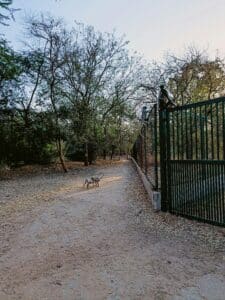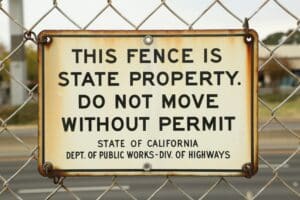A few months back, on a seemingly ordinary day, our neighborhood witnessed a heart-stopping moment that brought an important issue into sharp focus for all of us. My neighbor’s toddler, a curious little explorer, managed to slip out of the backyard while his mom was tending to the garden. It was only by sheer luck that a passerby spotted him wandering near the road—a busy one at that—and guided him safely back home. This incident served as a wake-up call for many of us in the community, highlighting a risk we had all underestimated: the safety of our children and pets in our own yards.
Fencing, a feature we often consider for privacy or aesthetic reasons, suddenly took on a new level of significance. It’s not just about marking boundaries; it’s a critical safeguard for our most cherished treasures—our kids and furry companions. With this realization in mind, I felt compelled to share insights on enhancing child and pet safety through appropriate fencing. This post aims to guide you on selecting and installing the right fence to create a secure space for your family and pets, ensuring peace of mind and a safe environment for them to play and explore.
The Importance of Safety Fencing
The peace of mind that comes with knowing your yard is a safe haven for your children and pets is invaluable. A properly installed and thoughtfully chosen fence acts as a guardian, keeping potential dangers at bay. Whether it’s the risk of traffic accidents for those living near roads, the possibility of getting lost for little adventurers keen on exploring beyond the backyard, or the threat posed by wildlife in more rural settings, a sturdy fence can be the barrier that keeps these dangers out.
Moreover, the significance of fencing extends beyond just preventing access to external dangers; it also plays a crucial role in creating a safe play environment for children and a secure area for pets to roam freely. The freedom to play outside, breathe fresh air, and interact with nature is essential for the development and well-being of kids and animals alike. However, this freedom shouldn’t come at the cost of their safety. A well-designed fence provides them with a boundary within which they can explore, learn, and play without the risks associated with the world beyond.
Proper fencing, therefore, is not just a physical structure. It’s a peace of mind, a preventative measure, and a crucial aspect of creating a loving, safe, and nurturing environment for those we care about most. It’s about making our homes a sanctuary where the laughter of children and the joyful barks of pets are sounds of happiness, not of potential danger lurking nearby.
Types of Fencing for Safety
When it comes to safeguarding our homes for children and pets, not all fences are created equal. Let’s explore the various fencing options and their unique benefits to help you make an informed decision.
Wooden Fences
Wooden fences are a timeless choice that blend aesthetics with functionality. They offer a traditional appeal that can be customized to match your home’s style, from classic picket fences to more private, taller designs. The privacy benefits are significant, as they provide a solid barrier that keeps prying eyes out and your loved ones in. When considering wooden fences for safety, pay attention to the height and the space between slats. A fence that’s too low might invite adventurous climbers, while wide gaps can be an escape route for small pets or even a hazard for curious children. Customization options allow for adjusting these features to meet your safety needs.
Chain Link Fences
Chain link fences are known for their durability and visibility. They are a practical choice for pet owners who want to keep their pets secure while also allowing them to see the world beyond the yard. The metal wires offer strength against the elements and energetic pets, but they can pose a risk of injury if not properly finished. Opting for a vinyl-coated chain link fence can soften the edges, reducing the chance of scratches or more serious injuries. This coating also adds to the fence’s longevity, resisting rust and corrosion.
Vinyl Fences
Vinyl fencing is a modern solution that addresses many of the concerns associated with wood and metal fences. Its low maintenance is a major plus—no need for painting or staining—and it’s built to last without splintering, cracking, or fading. Safety-wise, vinyl fences come with smooth edges, minimizing the risk of injuries. They’re available in various designs, including those that mimic the look of wood without the maintenance hassles. For families and pet owners, vinyl offers a blend of aesthetics, privacy, and safety, making it an excellent all-around choice.
Electric Fences
Electric fences are a bit different, primarily serving as a deterrent for pets rather than a physical barrier. They work by delivering a mild electric shock when a pet wearing a special collar crosses a boundary. It’s crucial that pets are properly trained to understand these boundaries to prevent confusion or distress. Electric fences can be effective for containing pets in large areas where traditional fencing might not be feasible or aesthetic concerns prevail. However, they don’t offer physical protection from external threats like other fence types do.
Considerations for Choosing the Right Fence
Height
The fence’s height is paramount in preventing escapes or unauthorized entry. It should be tall enough to discourage climbers, whether they’re children curious about the world beyond or pets with a knack for adventure.
Gaps and Openings
Select designs that minimize gaps to prevent small pets from squeezing through or children from getting stuck. The right design will balance aesthetics with safety, ensuring no one can slip through or get an arm or leg caught.
Durability and Maintenance
The material’s durability against weather and wear is critical, especially in homes bustling with activity. A fence that can withstand the elements and the energy of children and pets will serve you longer and provide better value.
Visibility
Visibility is a double-edged sword; it’s beneficial for pets to observe their surroundings and feel less confined, yet it may reduce privacy. Consider your family’s needs—whether visibility for your pets’ stimulation outweighs the desire for privacy—and choose accordingly.
Selecting the right fence involves balancing safety features with aesthetic preferences, maintenance considerations, and the specific needs of your household. Making an informed decision will ensure that your fence not only enhances the beauty of your property but also provides a safe and secure environment for your loved ones.
DIY Tips for Fence Installation
Installing your own fence can be a rewarding project that not only enhances your home’s safety but also adds to its curb appeal. Here are some practical tips to guide you through the process:
Planning the Layout
- Measure Twice, Dig Once: Before anything else, accurately measure your property lines. This ensures you’re fencing within your own property and not encroaching on your neighbor’s land.
- Consider the Terrain: Take note of any slopes or irregularities in your yard. These may require special considerations, such as stepped or raked fencing, to ensure a secure and aesthetically pleasing installation.
Digging Post Holes
- Depth and Width: Make sure to dig holes that are deep enough to support the fence posts—typically about one-third the height of the post above ground for stability. The width of the hole should allow for about 3-6 inches of gravel below the post for drainage, plus space around the post for concrete.
- Use the Right Tools: A post hole digger or an auger can make the job much easier, especially if you have multiple holes to dig.
Ensuring a Secure Fit
- Setting Posts: Place each post in its hole on top of a gravel layer for drainage. Pour concrete around the post, then check with a level to make sure it’s plumb. Brace the post as necessary until the concrete sets.
- Attaching Panels: For wooden fences, make sure to leave a small gap between the ground and the bottom of the panels to prevent rot. For chain link fences, ensure the tension is even across the fence to prevent sagging.
Checking Local Regulations and Permits
- Before starting your project, it’s crucial to check with your local building department about any regulations or permits required for fence installation. This can vary widely depending on where you live and may include specifications for fence height, materials, and placement relative to property lines.
Personal Anecdotes and Tips
- Call Before You Dig: Always call your local utility companies to mark any underground lines before you start digging. I learned this the hard way when I nicked a water line, resulting in an unexpected and unwelcome fountain in my yard.
- Talk to Your Neighbors: A simple conversation with your neighbors about your fencing plans can prevent disputes later on. Plus, they might share useful tips or resources if they’ve undergone similar projects.
Conclusion
The decision to install a fence should not be taken lightly, especially when the safety of children and pets is at stake. The right fence not only enhances the beauty and value of your property but, more importantly, creates a safe and secure environment for your loved ones to enjoy. It’s an investment in peace of mind, knowing that your yard is a protected haven where the youngest and furriest members of your family can explore and play without unnecessary risks.
As you embark on your fencing project, remember that this is more than just a weekend DIY task—it’s a commitment to the safety and security of your family. Whether you’re driven by the desire for privacy, the need to keep pets contained, or the urge to create a safe play space for your children, taking action now can prevent accidents and ensure peace of mind for years to come.
Reflecting on the close call in our neighborhood, I’m reminded of the profound sense of relief and gratitude felt when that little one was safely returned home. It reinforced my belief in the importance of taking proactive steps to secure our spaces. Let this be a call to action for all of us to prioritize the safety of our homes, not just for the aesthetic appeal or property value, but for the well-being of those we hold dear.



